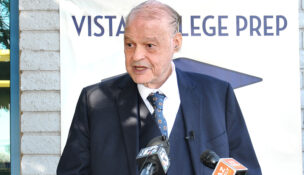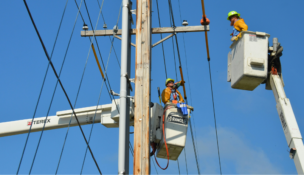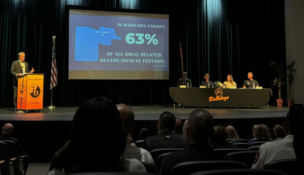Auditor says public schools lacking in implementing emergency plans
Howard Fischer, Capitol Media Services//December 10, 2024//[read_meter]
Auditor says public schools lacking in implementing emergency plans
Howard Fischer, Capitol Media Services//December 10, 2024//[read_meter]
State auditors said not a single one of the schools they reviewed had fully implemented their emergency operations plans, a failure that a new report says “could affect their ability to protect students in emergencies.”
The study presented Tuesday to state legislators also found that only four of the 47 schools checked at random could demonstrate they had conducted all required lockdown-type drills.

“Failure to perform required lockdown drills increases the risk that students or staff do not know how to act in emergency situations and may increase risk to students and staff during emergencies,” wrote Auditor General Lindsey Perry on behalf of her staff. But that was not the only problem they found.
“About half of the schools did not conduct and document all required evacuation drills, which could affect whether students and staff can safely exit classrooms and buildings in an emergency,” Perry wrote, something that is supposed to happen monthly.
Other problems Perry said her staffers found include:
- Few schools posted all required safety reference materials in every classroom and assembly area, something she said increases the risk that students and staff may lack critical guidance in emergency situations;
- None of the schools posted safety reference materials in their buses, a lack Perry said could preclude them from helping to better respond to emergency situations;
- A failure of most school districts to annually review their emergency operations procedures, something she said could result in staff relying on outdated procedures and producing “an inefficient or ineffective emergency response.”
Perry also pointed out that Arizona, unlike most other states her staffers review, lacks a mechanism to ensure that all schools have emergency operations plans that meet minimum standards.
“Arizona’s lack of a process for monitoring schools’ compliance with EOP standards likely contributed to the deficiencies we identified,” Scott Swagerty told members of the Joint Legislative Audit Committee on Tuesday. He is director of the Auditor General’s Division of School Audits.
That monitoring, Swagerty said, would make it easier for the state Department of Education and the state Division of Emergency Management to identify schools who had not developed emergency plans and provided “targeted support” for those who need help meeting the standards.
The audit does not say which 47 schools, including both traditional and charter schools, were examined, citing “potential safety concerns and the sensitive nature … of the findings and recommendations.” That information will be available only in limited use, confidential reports.
Swagerty told lawmakers that his office chose from a variety of types, sizes and locations of schools.
He acknowledged that this doesn’t necessarily mean these same conditions exist in the same ratio at the more than 2,600 school sites across the state. But the report does point up shortcomings that likely exist on a broader scale.
Auditors said the issue of planning is crucial, citing the number of school shootings.
Citing figures from Education Week, there have been 219 of these since it began tracking data in 2017, including 37 just this year with 16 killed and 52 injured.
“Although Arizona districts and charters have not yet experienced school shooting tragedies on the level seen elsewhere in the country, there have been numerous incidents of weapons and other threats to schools and students,” the new report says.
It cites a January incident at a Douglas school where its emergency operations plan was activated because of a man with a knife near its campus.
More recently, in April a Phoenix elementary school student was found with a gun on a school bus, the following month a gun was found in a Mesa high school student’s backpack. There also was a Phoenix high schooler arrested in August for bringing a gun to a school campus, and in September a school in San Luis was locked down as police investigated reports of shots being fired.
Some of the problems mentioned in the audit appeared to be more technical.
For example, it says that state law specifically requires district and charter schools to develop their emergency operation plans in conjunction with law enforcement and other emergency response agencies. But the report says most of the plans lack signatures showing that actually has been done.
More significant has been the failure of schools to conduct the legally required four lockdown and shelter-in-place drills each year.
The report says that involves things like locking classroom doors, closing windows, shutting window covering and moving to a specified location in the room while remaining quiet and still.
“Without practicing the behaviors and skills expected during lockdowns, schools increase the risk that students may not follow procedures due to panic or stress,” the audit says. There’s also the danger that staff may not be aware of students who have “adverse reactions” during drills, potentially increasing safety risks during real emergencies.
It’s even more dire than that. Sen. Justine Wadsack related her own real-world experience and why she thinks this planning is crucial – and needs to be .
The Tucson Republican who sits on the audit committee noted she has a 21-year-old non-verbal child with limited cognitive abilities who is confined to a wheelchair in a school. More to the point, Wadsack said, there are no paraprofessionals sitting with her.
“So when a classroom ends up just emptying out, there’s nobody assigned to her to make sure that they grab that wheelchair and wheel her out,” she told colleagues.
“If you have a child that cannot walk themself out of a room, they cannot wheel their wheelchair out of a room, they’re nonverbal, they don’t know what’s happening, the room would burn down around her and not move,” Wadsack continued. “She would literally sit there and let the room burn around her.”
Then there’s the question of access to the emergency plans. The report says these should be readily available and posted where they were visible and accessible to students.
According to the audit, some schools instead had binders or booklets. But there were situations where staffers had to search for those materials – and in a few cases, where they could not find them when asked.
Rep. Kevin Payne, R-Peoria, said there’s an overarching issue: the minimum standards that schools are expected to meet when coming up with and implementing emergency plans.
“It seems to me they’re kind of the backbone of this whole thing,” he said. Payne said if they’re crafted correctly, everything else can build from there.
But he called them “woefully inadequate.”
The audit report does not use those words. But it does say that there should be a “comprehensive review” of the standards in place in other states to determine if things are missing from what’s required in Arizona.
Among the issues are things like cyber breaches, disaster recovery and continuity of operations to ensure schools can remain open during and after an emergency.
“Some other states also have requirements relating to prevention, such as procedures for addressing behavioral threats and potentially suicidal students,” the audit states.
Â


















